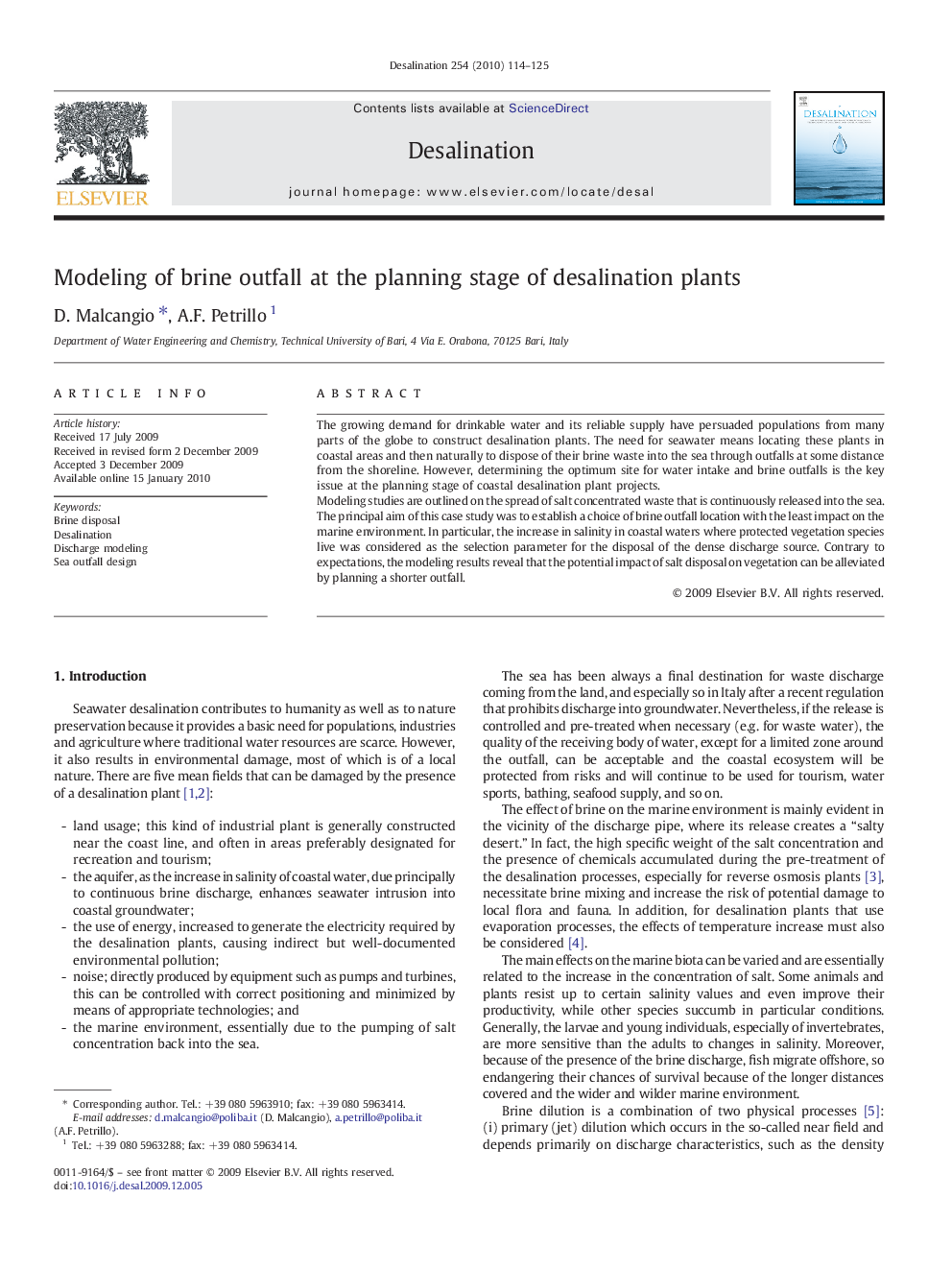| Article ID | Journal | Published Year | Pages | File Type |
|---|---|---|---|---|
| 625924 | Desalination | 2010 | 12 Pages |
The growing demand for drinkable water and its reliable supply have persuaded populations from many parts of the globe to construct desalination plants. The need for seawater means locating these plants in coastal areas and then naturally to dispose of their brine waste into the sea through outfalls at some distance from the shoreline. However, determining the optimum site for water intake and brine outfalls is the key issue at the planning stage of coastal desalination plant projects.Modeling studies are outlined on the spread of salt concentrated waste that is continuously released into the sea. The principal aim of this case study was to establish a choice of brine outfall location with the least impact on the marine environment. In particular, the increase in salinity in coastal waters where protected vegetation species live was considered as the selection parameter for the disposal of the dense discharge source. Contrary to expectations, the modeling results reveal that the potential impact of salt disposal on vegetation can be alleviated by planning a shorter outfall.
